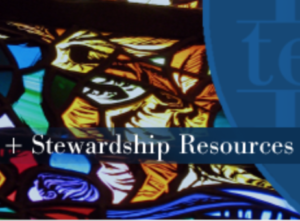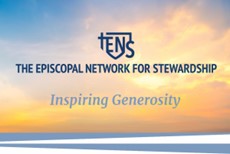|
Congregational Development Commission
|
|
The Congregational Development Commission (CDC) provides funds for programs that strengthen congregations, especially those that are field testing new programs/initiatives on behalf of the diocese, done in partnership with other churches, or are part of a plan to spur significant growth, expand ministry, etc. CDC meets on the first Tuesday of every month.
Mustard Seed or Vineyard Grants
The CDC announces an ongoing grant program available to all congregations in Rhode Island. Do you envision a program or new ministry to help develop your congregation into a more faithful and vibrant expression of the Body of Christ? Do you have plans for making your congregation more responsive to the local challenges and opportunities before you in your community? How about ideas for transformative collaborations with other congregations that fit with your unique mission or vision for ministry? CDC Mustard Seed or Vineyard grants offer your congregation the financial support to put your vision into action. You can read about past recipient programs here.
Apply now for a Mustard Seed or Vineyard grant.
Mustard Seed grants are for proposals up to $2000. These grants can be approved immediately by the CDC at its monthly meetings.
Vineyard grants are proposals over $2000 and require both CDC and Diocesan Council approval. The application review and approval time for the Vineyard grants is two-three months.
Application Process:
The link above will take you to (a Wufoo) form which will serve as your application. You will be asked to upload an income statement. The application and your statement will be reviewed by the Grants and Loans Committee and if applicable forwarded to CDC and then if over $2,000.00 the grant request will be forwarded to Diocesan Council. You may be asked for additional information before a decision can be made. Grants and Loans Committee meets every Monday. CDC meets on the first Tuesday of every month. Diocesan Council meets on the fourth Wednesday of every month.
Thrivent Loans & Grants
 Church Loans
Church Loans
Thrivent Church Financing lends exclusively to Christian churches and organizations with a goal of helping them grow their ministries and facilities and make a difference in their local communities.
They offer traditional and flexible funding for:
- Refinance of existing mortgage loans
- Purchasing new property
- Construction, expansion or renovation
- Purchasing equipment for worship or facility needs
- Repairs (parking lots, roofs, HVAC, etc.)
Thrivent Church Financing is a part of Thrivent Financial. Thrivent Financial creates financial strategies that help Christians be wise with money and live generously. Thrivent Financial offers a broad range of financial products and services, including life insurance, annuities and mutual funds, plus tailored guidance from financial representatives nationwide.
Thrivent is a unique kind of membership organization called a fraternal benefit society. By definition, a fraternal benefit society is a not-for-profit organization that provides insurance to its members and – this is key – has to carry out social, intellectual, educational, charitable, benevolent, moral, fraternal, patriotic or religious purposes for the benefit of its members and the public. So they don’t simply sell insurance, and they don’t simply do charitable work either. As a fraternal benefit society, they do both as they help Thrivent members on their wise with money journeys. Thrivent began as a Lutheran fund that has recently opened its programs to other denominations and is especially welcoming the Episcopal Church as our denominations have a concordat that makes us close partners.
Grants for Projects
In addition to financing, Thrivent Financial offers programs that support the values of faith, family and service, as well as opportunities for members to support organizations and causes they care about.
- Member-directed contributions through Thrivent Choice®.
- Thrivent Builds with Habitat for Humanity.
- Member-led Thrivent Action Teams to positively impact local communities. Many of our RI congregation’s have benefited from Action Team grants.
Credit Union
Thrivent also offers a Credit Union for its individual members and for churches.
Sustainable Church
The rising costs of staff combined with declining memberships and, in many cases, buildings requiring increased capital investment are impacting all sizes of churches today. Most small churches faced these issues years ago, but now even our larger churches are struggling to make ends meet. More and more churches are beginning to look at how they can become a “sustainable church.” In other words, how can we make the income and costs balance over time in a way that frees us to do ministry instead of being held captive by financial concerns?
Sustainable Church, an article to begin the process of re-thinking how we fund churches.
Pledge Campaigns

The Episcopal Network for Stewardship (TENS) sets an annual theme that has templates for letters, pledge cards, and other resources. Our Diocese is a member of this organization. If you need log-in information, contact Mary Ann Mello
Episcopal Church Foundation Vital Practices has many tips and resources for yearly stewardship programs.
Stewardship of Finances – is a free, downloadable, year-round stewardship program.
Donating Stock and Securities
 The Diocese cannot carry out its many ministries without the generous gifts of supporters both past and present. One way you can contribute to our ongoing work is to donate stocks or other securities. Contact Joan DeCelles, Finance Manager, for information on how to transfer ownership of stocks to the diocese. Our thanks and tax donation information will be provided.
The Diocese cannot carry out its many ministries without the generous gifts of supporters both past and present. One way you can contribute to our ongoing work is to donate stocks or other securities. Contact Joan DeCelles, Finance Manager, for information on how to transfer ownership of stocks to the diocese. Our thanks and tax donation information will be provided.
Harry Potter and the church pledge drive
Good idea:
![Harry Potter and the church pledge drive [in HarryPotter font]](https://www.episcopalri.org/wp-content/uploads/2017/08/Harry-Potter-headline.png)
by Dave Seifert
Harry Potter is coming to church in Cumberland.
The popular books and movies, celebrating their 20th anniversary this year, will be used as the theme for this year’s pledge drive at Emmanuel Church. The special campaign will feature celebration, competition and creativity.
Here are five things to know about what Emmanuel is doing.
1. Separating the focus on pledge drive and stewardship. Emmanuel has stopped using the term “stewardship” in direct connection with financial pledges. “We’re having a ministry fair in early September where members can tell us how they will spend their time and talents,” explained the Rev. Joan Testin, rector. “The pledge campaign is about funds to operate the church and how we as Christians think about and decide how to spend our money.
“We separate out ‘treasure’ from ‘time and talent’ because it gives all of us time to consider how we use our discretionary money,” she added. “When we give appropriately for the work of the church and to help serve others, we are free to enjoy the rest of what we have been able to earn and accumulate through God’s good gifts to us.”
2. Having fun and celebrating. The campaign will begin with a celebratory dinner to announce the theme and prizes. Parishioners will be divided into four groups, to represent the four houses at the Hogwarts School of the books and movies. Testin and a church member who normally tracks pledges are creating the teams to have a balance of current pledgers and nonpledgers.
“We’re planning to serve some of the foods talked about in the books — such as treacle tarts and knickerbocker glories (traditional British desserts),” she noted. “One of our members also is researching a way for us to play Quidditch (magical competitive sport involving flying contestants).”
3. Building involvement/engagement. The campaign will use competition to build involvement. The team with the most pledging members will win “the house cup” (given at Hogwarts at the end of the school year to the house with the most points), which will be awarded at a mid-November celebration.
4. Using visual stimulation. As the campaign goes on, progress will be tracked using big charts on the back of the wall in Emmanuel’s worship space. Big sequins will be used to add jewels to a cup each time someone pledges.

5. Continuing to emphasize the “why” of pledging vs. giving. Even with all the creativity, though, the campaign isn’t without its traditional moments. “We’re planning our usual Sunday morning conversations about why we pledge vs. why we give,” Testin said. “But we’re building everything around the Potter theme. We’ll see how it goes!”
Do you know of other “good ideas” happening at Rhode Island Episcopal churches? Other churches might pick up those ideas and apply them. Send your “good idea stories” to pressroom@episcopalri.org.
Project Resources
 Project Resource is a teaching and resource movement that assists philanthropy and raises funds needed in God’s mission. If the clergy and lay leaders around the nation could be taught how to raise money and how to invite new members, the mission would be released to flourish. Project Resources seeks to place in the hands of every congregant the power to motivate and transform resource development in their churches so that ministry is in no way constricted by a lack of money or of congregational vitality.
Project Resource is a teaching and resource movement that assists philanthropy and raises funds needed in God’s mission. If the clergy and lay leaders around the nation could be taught how to raise money and how to invite new members, the mission would be released to flourish. Project Resources seeks to place in the hands of every congregant the power to motivate and transform resource development in their churches so that ministry is in no way constricted by a lack of money or of congregational vitality.
Through a strategy that employs the best minds in financial development, membership marketing, congregational empowerment, and communications, Project Resources seeks to make directly available to every church the teaching resources they need to raise funds and people. Just imagine a Bishop and their team of teachers coming home to their diocese to teach any clergy person or lay leader how to raise new money and new congregation members. Imagine having ready online access to hundreds of model documents needed in all aspects of development and membership marketing, including pre-designed Word-templates in which a church need only drop in names, type, and images. Imagine finding and downloading a pledge-card template, a phone-a-thon script, a major gifts teaching seminar, a planned giving program model, a membership campaign schedule or a pledge campaign plan with the click of a cell phone button. Imagine clergy and lay church leaders well-versed in all aspects of resource development so that their time is spent growing churches rather than ministering to anemic budgets.
Project Resource is not primarily about raising money or increasing membership, though these will be side-benefits. We are seeking to change entire systems of church leadership around financial and human resource development. We are proposing to accomplish this by training teachers to be effective adapters of materials and strategies so they fit the demographic, cultural norms, and available resources of their specific region. These teachers will then equip their dioceses for the work— remaining as consulting teams focused on teaching raising money and people for God’s mission. Project Resource is sponsored, as a service resource, by The College for Bishops and The Development Office of the Episcopal Church.
Project Resource is sponsored as a service-resource by The College for Bishops and The Development Office of The Episcopal Church.
There are a wide variety of resources on annual giving, planned giving, major gifts and more at the Project Resource Website. The resources below are what we received when our team attended the conference. But there are more resources available on their website.
Day One Resources
Dive into Project Resources with a brief meditation on the resurrection icon and a conversation about what it means to pull a church or diocese from sleep to wakefulness regarding resource development. The program models various tools to use when engaging the topic of development such as base fears, resistance, and avoidance. Materials look at over-arching statistics and set goals for movement over ten years – looking at needs, capacity, people, funding, calendars, and goals.
Day Two Resources
This second batch of Project Resource materials focus on pledge campaigns. Starting with case development (why we deserve the money we seek to raise and how to communicate that need.) your stewardship team will learn the basics of the Art of Hosting Meaningful Conversation as a way to develop a case which has donor investment. The resources continue to look at conversations church leaders can have around what the future of what annual support will look like as generations and technologies change. This segment covers detailed strategies for communications.
Day Three Resources
At this point, Project Resources narrows its focus on major gifts and planned gifts. Icons used for meditation in this module include a new icon on the Rich Young Ruler and the great icon of the Myrrh-bearing Women of Easter. Strategies for all aspects of major gifts work include prospect identification, moves management, metrics tracking, special events, cultivation for differing levels of engagement, and donor appreciation. This batch of materials also looks at the intricacies of how clergy members maintain the relationship with members of congregations while also managing cultivation and solicitation work around major gifts. This segment also include stories of donors whose personal wealth makes them major donors. Learn about what major gift donors do and do not appreciate when being approached by churches and dioceses.
For more information or to schedule a training session on Project Resources, contact the Diocese Congregational Development Committee’s Project Resources Team: Lora MacFall (loramac@cox.net), the Rev. Sunil Chandy (fathersunil@christchurchwesterly.org) or the Rev. Veronica Tierney (priest@christchurchlincoln.org).
Return
Come and see. Go and be.
The next day Jesus decided to leave for Galilee. Finding Philip, he said to him, “Follow me.” Philip found Nathanael and told him, “We have found the one Moses wrote about in the Law, and about whom the prophets also wrote—Jesus of Nazareth, the son of Joseph.” “Nazareth! Can anything good come from there?” Nathanael asked. “Come and see,” said Philip. (John 1: 43-44,46)
Come and See
DOWNLOAD the Come & See Manual
Philip faced a companion whose resistance to Jesus is not unlike what many of Christians today face when they talk about Christianity with their secular friends. “I’m spiritual, but not religious,” they say. And often they add a story about or a perception they have of churches – it is judgmental and negative, homophobic, against other religions, dominated by people who take the Bible literally or is a religion with a political agenda. Others may have tried church and found it boring, that it failed to give purpose to their lives or that it didn’t make a difference in the world.
All of these negatives make the idea of inviting someone to church daunting. So most of us avoid inviting anyone. And yet, churches today will not grow if we don’t invite people to join us. People moving into town, seeking community or wanting to make a difference will no longer automatically turn to the church. In fact, 40% of adults today seldom or never attend church. If we look at younger adults, that number increases to 50%.
We live in a world where people live highly independent and very busy lives. We don’t know our neighbors. We are over-worked, over-scheduled and many of us don’t have social lives outside of Facebook. If we do socialize, we tend to keep religion out of the conversation. So even if we felt inclined to invite someone to church, we often don’t know who we might invite or feel we have a relationship that gives us the right to invite them to church.
Just encouraging ourselves and each other to invite people to church isn’t going to work. We need to be intentional, provide support to each other and, perhaps most importantly, do it together! “Come and See” is a way for your congregation to plan for and do something to help your church grow. It is an opportunity for you to do what Philip did for his friend, Nathanael—invite someone you know to just to come and see. No pressure to join. No guilt trip. Just a simple invitation to check out your church, to experience something that is important to you.
Those who have tried this process of invitation report that about half of the households in their church will participate, about 2/3 of those invited will attend and half of those will attend again and indicate an interest in joining the church. So if you have a congregation with 60 households, about 30 of those will invite someone, 20 of those invited will attend and 10 of those visitors will begin attending your church. Whether they will stay depends on many things, but even if only half of those return visitors become full participants, that’s five new households or about a 10% annual growth rate—something most churches would be excited about!
Church growth won’t just happen. It is something we all have to work together on finding ways to invite and incorporate new members into our churches. We need to do that, not because we need more “butts in the pew” but because it is what Jesus commanded us to do.
“Go therefore and make disciples of all nations, baptizing them in the name of the Father and of the Son and of the Holy Spirit,” (Matthew 28:19). Church is not just about our gathering to worship, learn and enjoy, but also what we receive from our time there. Church is the gathered community, empowered to go forth and tell the story of Jesus, to go forth and invite others to come and see.
Go and Be
There is another side to evangelism besides inviting people to visit your church—it is YOU going to be where people are. In other words, taking the church to the people instead of bringing people to the church! While some of your friends will accept an invitation to church, being with people where they are is often a more effective witness. Many people today, especially younger people, want to make a difference. They aren’t interested in just attending a worship service—at least initially. They want to do something. They want to help people in need, change the world, work on an issue they care deeply about.
So we need to be where they are and join in what they are doing. A cadre of your church’s members showing up at a community event with T-shirts identifying your church is one way to be visible in the community. But so is a lone individual who is faithful in being present and engaged in some activity that is making a difference in your community.
God is already at work out there—we just need to go forth into the world and see where God is active. And then be there. Be engaged and involved. And be ready to bear witness to the faith that is in you.
Joining in outreach, advocacy and social justice efforts underway in our communities gets us out of our small circle of church people and into a wider network of people. Working together enables us to do more than we can do with the same group of people who are known to be our core “workers.” It also enables us to build relationships with people we otherwise might never even meet. If we want to expand our horizons, reach new populations, learn about and from people who are not part of our congregation, we need to get out into the community.
So go and be part of God’s work in the world. Go and be part of making a difference. Go and be part of changing the world. Go and be a Christ-bearer: go and be prepared to meet the Christ in the people you encounter. Go and be. Encounter Jesus in your community, who is present and alive in the world around you, and who invites you to come and see.
Go and be. Come and see. Come and see. Go and be.
DOWNLOAD the Come & See Manual
Count Your Blessings
 Thanksgiving is a time when many people pause, often just before digging into Thanksgiving dinner, to count their blessings. This practice of counting your blessings turns out to have far reaching implications for more than just Thanksgiving. It can help you stop your overspending behavior and handle money better….and may even help you cope with other habits you’d like to change, like eating or smoking too much.
Thanksgiving is a time when many people pause, often just before digging into Thanksgiving dinner, to count their blessings. This practice of counting your blessings turns out to have far reaching implications for more than just Thanksgiving. It can help you stop your overspending behavior and handle money better….and may even help you cope with other habits you’d like to change, like eating or smoking too much.
Research by a team at Northeastern Univeristy found that people make financial decisions emotionally as much as and perhaps more than we make those decisions logically. Trying to ignore or supress your emotions when you make financial decisions tends to give our fears greater power over us. So we decide based on what makes us feel safe or secure. This is especially true when trying to exercise financial self-control — that is, keeping ourselves from spending money on things we later regret.
In a classic test of financial self-control participants were told they could have $54 dollars immediately or get $80 if they waited 30 days. Quick, before you read any further, what would you choose? The researchers divided people into three groups, people who tested as happy, those who were grateful and those who were neutral. The difference in reactions was marked — those who were happy or neutral, chose the $54 option.Those who were grateful mostly chose the $80 in 30 days option. In other words, gratitude led this group to choose an option where they made a 48% return on their investment in 30 days or a 576% annualized return!
We are programmed to “kill and eat” so having something immediately is better than getting it later, even if getting it later means we get much more. We don’t know why people with an attitude of gratitude were willing to wait but there was a clear correlation. The more grateful people were, the more willing they were to wait for the larger gain.
Being neutral or even happy isn’t enough to change your behavior; Being grateful is. Cultivating an attitude of gratitude can help people make good financial decisions and, the researchers believe, can also help them change other behaviors. Gratitude makes it possible for people to defer gratification — to wait for better things in the future.
An attitude of gratitude is a core spiritual practice that helps people develop a more mature spiritual life. Instead of just calling on God for help in moments of crisis or to help or heal loved ones, we begin to see God’s grace present in everyday life. Developing an grateful orientation to life is like the Japanese garden path with uneven stones — they are designed to force you to walk slowly, look down and see the plants, stones and beauty beneath your feet, beauty you would otherwise miss in your rushed march across the sidewalks of life. Stopping to say “thank you” many times each day means you are constantly asking yourself: “Where is God acting in my life? What am I thankful for in this moment?” Giving thanks, developing an attitude of gratitude makes God real and present in a multitude of tiny ways — and that adds up to a different approach to life. As an added benefit, it turns out that it also means we are likely to make better financial decisions!

 When Jesus tells the parable of the unproductive fig tree, it is told as a conversation between a man, perhaps the landowner, and the gardener, the one who tends the land. The man observes that the fig tree has not born fruit for the last three years, and, worrying about the nutrients, land, and time the tree is consuming, he orders it to be cut down and destroyed.
When Jesus tells the parable of the unproductive fig tree, it is told as a conversation between a man, perhaps the landowner, and the gardener, the one who tends the land. The man observes that the fig tree has not born fruit for the last three years, and, worrying about the nutrients, land, and time the tree is consuming, he orders it to be cut down and destroyed.